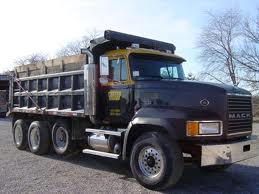Care & Maintenance
Care and Maintenance Tips for Asphalt
Asphalt pavement is economical, durable, and long lasting. However, in order for asphalt to be a good investment, it must be properly constructed and maintained. The upkeep is very minimal and cost efficient. Although, R.J. Hicks can provide maintenance services, there are a few simple things that the customer can do to help ensure that their investment will last for years to come.
DON’T place sharp or pointed objects on the asphalt. These items include but are not limited to high heel shoes, bicycle/motorcycle kick stands, ladders, chairs, etc. Also, if using jack stands or vehicle ramps place a piece of plywood under them first. The reason for this is that the pounds per square inch at great in value. This means that although the object may be light in weight, the weight is concentrated on one small area and not evenly distributed. Therefore, the end result will be an indentations.
DON’T allow gasoline, oil or any chemical to spill/leak on the asphalt. If this does occur wash the area as soon as possible. Any harsh chemicals will “eat” away the asphalt and cause deterioration. Having the pavement coated with sealer will help as the sealer repels most chemical spills/leaks.
DON’T allow weeds, grass, or other vegetation to crowd the edges of the asphalt. Any vegetation can penetrate the asphalt and cause cracking. Dandelions is one species that has phenomenal strength that can even penetrate concrete. A simple solution of weed killer sprayed on problem areas only will help the problem.
DON’T feel that the pavement should have a completely puddle free surface. The oils that are in new asphalt tend to hold a little water on the pavement surface. Eventually these oils will evaporate and the water will disappear. However, over time a subtle shifting of the sub base may occur and this may cause some puddling on the surface. This is beyond the contractors control.
DON’T turn the car wheels too sharply, especially don’t then the wheels while standing still. Make sure the car is in motion and then gradually turn the wheels. This is because asphalt contains certain oils to make it Kore workable. During the curing process, which may take a year or longer depending on the thickness, weather, etc., the asphalt will remain soft until the oils evaporate. So standing still and moving the wheels against the asphalt causes a kneading action which will result in scuff, bruising, or lacerations to the pavement surface. This is most important during the hottest part of the day because that’s when the pavement is the softest.
DON’T allow heavy weight vehicles or equipment on the asphalt unless it was specifically designed to accommodate that weight class. If it was not constructed for this extra weight load the pavement will break due to the base shifting under pressure.
DON’T park or drive near/off the edges of the asphalt. The reason for this is that the asphalts strength lies in the structure of the stone base, the asphalt has no structural strength by itself, its only a wearing surface. Therefore, if the edges are placed under substantial weight it will crack or break away. A remedy to ensure strength to the pavement edges is to have some kind of support around the edges. Railroad ties, aluminum edging, paver blocks, and Belgium block are a few ideas of edge support.
DON’T park a vehicle or trailer in the same spot continuously. Try to move around slightly to distribute the usage evenly over the asphalt surface. The reason is because no matter how deep the base is, how thick the material, or how heavy the compaction depressions from the wheels may result over time. However, if a vehicle/trailer must be parked stationary for an extended period of time place plywood under the tires to help with even weight distribution.
